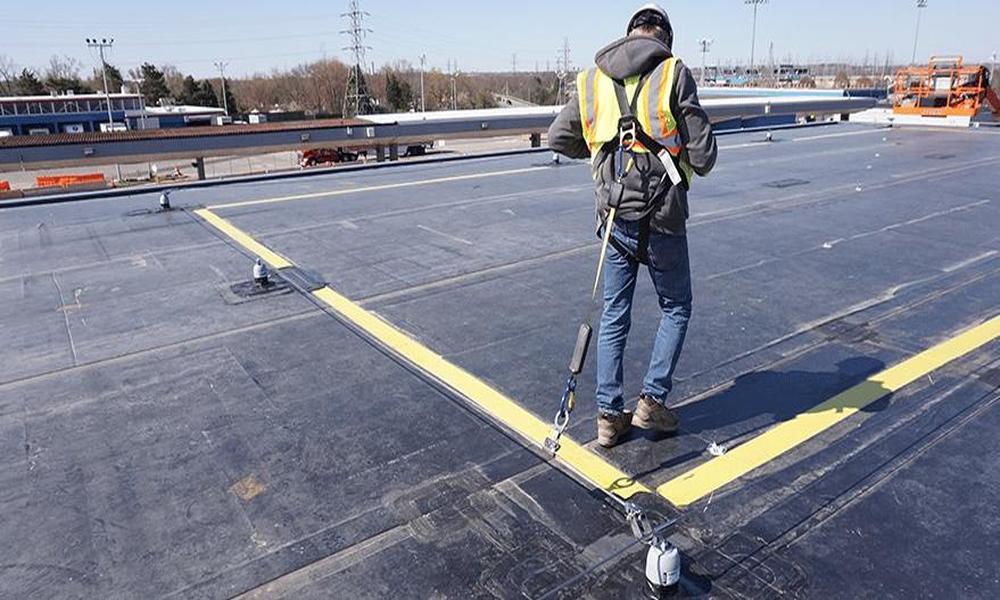Working at heights is an inevitable part of many industries, from construction to telecommunications. However, it also poses significant risks to workers, with falls being one of the leading causes of workplace injuries and fatalities. Ensuring the safety of your employees should be a top priority, and implementing a horizontal lifeline fall protection system is a crucial step in achieving that goal. In this post, we will delve into the benefits of horizontal lifeline systems and how they can help create a safer work environment.
What is a Horizontal Lifeline System?
A horizontal lifeline system is a type of fall protection that consists of a cable or rope anchored between two points, usually at the same elevation. This cable is connected to a worker’s harness via a lanyard and a sliding attachment point, allowing them to move freely along the line while still being secured. In the event of a fall, the system works to arrest the fall and prevent the worker from hitting the ground or any lower-level obstacles.
Enhanced Safety for Workers
The primary benefit of a horizontal lifeline system is the increased safety it provides for workers who are working at heights. By connecting workers to a secure anchor point, these systems help prevent falls and reduce the risk of serious injury or death. They also provide better fall arrest capabilities than single-point anchors, as they can distribute the force of a fall more evenly across the system, reducing the impact on the worker.
Greater Freedom of Movement
One of the challenges of working at heights is the need for workers to move around to complete their tasks. Traditional fall protection methods, such as fixed anchor points, can be restrictive and limit mobility. Horizontal lifeline fall protection systems, on the other hand, allow workers to move freely along the length of the cable without needing to disconnect and reconnect to different anchor points. This not only increases efficiency but also reduces the risk of falls due to workers attempting to bypass safety measures for the sake of convenience.
Versatility and Adaptability
Horizontal lifeline systems can be designed and installed to suit a wide range of worksite conditions and requirements. They can be used on various structures, including roofs, bridges, and scaffolding, and can be configured to accommodate corners, changes in elevation, and other obstacles. This flexibility makes horizontal lifeline systems a valuable asset for worksites with unique or challenging layouts.
Improved Worker Confidence and Productivity
Implementing a robust fall protection system like a horizontal lifeline can have a positive impact on worker confidence and productivity. When employees feel safe and secure in their work environment, they are more likely to focus on their tasks and perform at their best. In addition, knowing that their employer is committed to their safety can boost morale and job satisfaction.
Compliance with Safety Regulations
In many countries, occupational health and safety regulations require employers to provide appropriate fall protection for workers who are exposed to fall hazards. Installing a horizontal lifeline system can help businesses meet these requirements and avoid potential fines, legal action, or damage to their reputation.
Cost-Effectiveness
While the initial investment in a horizontal lifeline system may seem substantial, it can prove to be a cost-effective solution in the long run. The reduced risk of falls and injuries can lead to lower workers’ compensation costs and fewer lost workdays due to accidents. Additionally, the increased efficiency and productivity resulting from improved worker mobility can help offset the cost of the system.
Choosing the Right Horizontal Lifeline System
When selecting a horizontal lifeline system for your worksite, it’s essential to consider factors such as the type of work being performed, the layout of the worksite, and any specific hazards that may be present. Consulting with a fall protection specialist can help you determine the most suitable system for your needs and ensure that it is properly installed and maintained.
The Bottomline:
A horizontal lifeline fall protection system can significantly improve the safety of workers who are required to perform tasks at heights. By providing enhanced fall prevention, greater freedom of movement, and adaptability to various worksite conditions, these systems can help create a safer work environment and foster a culture of safety within your organization. To ensure the well-being of your employees and maintain compliance with safety regulations, consider investing in a horizontal lifeline system for your worksite.
Are you ready to take the next step in ensuring the safety of your workers? Contact us today to learn more about horizontal lifeline fall protection systems and how they can benefit your business.

